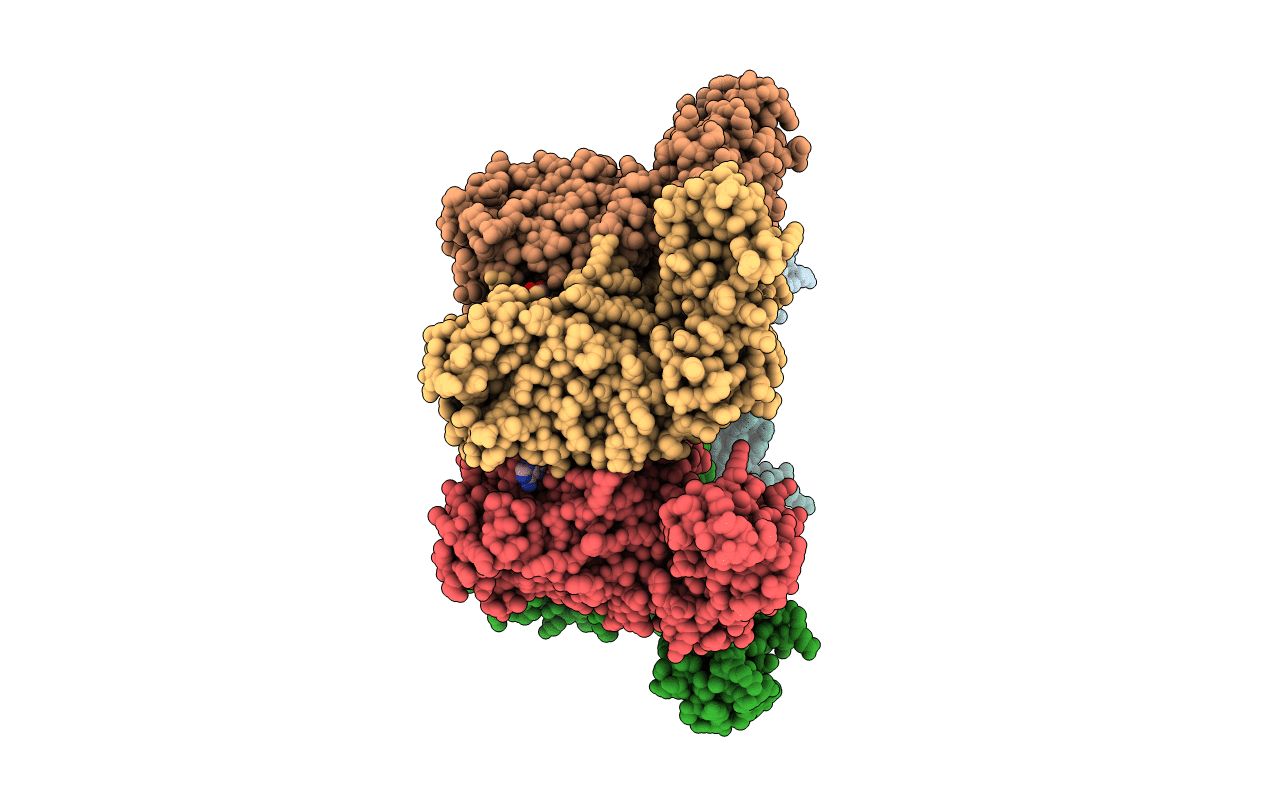
Deposition Date
2016-04-24
Release Date
2016-11-16
Last Version Date
2024-10-09
Entry Detail
PDB ID:
5JJI
Keywords:
Title:
Rho transcription termination factor bound to rU7 and 6 ADP-BeF3 molecules
Biological Source:
Source Organism:
Escherichia coli O157:H7 (Taxon ID: 83334)
synthetic construct (Taxon ID: 32630)
synthetic construct (Taxon ID: 32630)
Host Organism:
Method Details:
Experimental Method:
Resolution:
2.60 Å
R-Value Free:
0.24
R-Value Work:
0.21
R-Value Observed:
0.22
Space Group:
P 1 21 1


